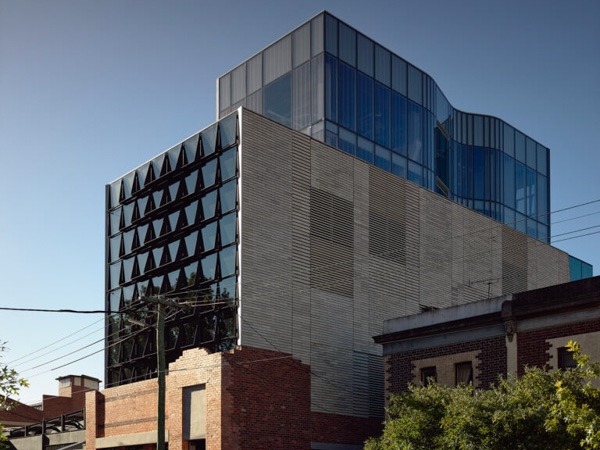From the architect:
Zero Gipps is a unique workplace creating a ripple of quiet intrigue in historic Collingwood.
A peaceful sanctuary set against the suburb’s industrial backdrop, this six-storey building is far from a typical sterile office space. It’s a future-focused workplace, with innovation and sustainable design at its core, one that’s great for tenants and workers, supporting their health and well being, and one that they’ll enjoy going to, every day.

The old building was retained and its original elements repurposed, giving a nod to the building’s history and circular design principles. The old red-brick factory was retained, preserving more of the city’s fabric and history. Workers now enter the building in the laneway, through an opening in the original wall, and into the central, communal courtyard. The new facade sits above the old brick warehouse with a muted palette of brick, concrete and glass, delivering a neutral, contemporary extension to the existing shell.

Set on an elongated site 60m long by 10m wide, we separated the building into two halves – creating a large and inviting courtyard at the ground, and an open light court the entire height of the building. A series of 250sqm floorplates to the north and south of the site are each connected by open, linking walkways, with an open staircase.

True to its name, Zero Gipps reflects sustainability aspirations, Zero talking to its zero operational emissions and zero gas. The central courtyard and edible garden create connections to nature and 100 solar panels on the roof deliver 35kw of energy. Inward opening tilt and turn windows behind ceramic battens enable natural ventilation, unlike a standard office building that’s fully sealed and only mechanically ventilated.

A Green Travel Plan is matched with generous end-of-trip facilities including luxurious change rooms, bike parking for 56 bikes, showers, dryers, personal lockers and electric charging stations. These inclusions led to one of the building’s most significant attributes: permission by Council for no cars on site, which is highly unusual in an office building of this scale.

